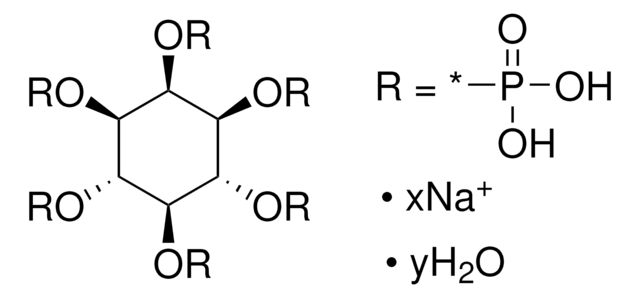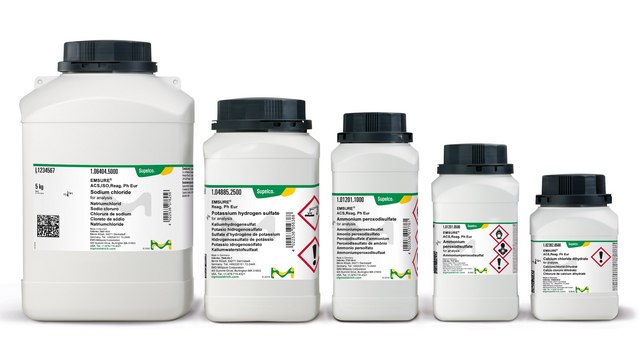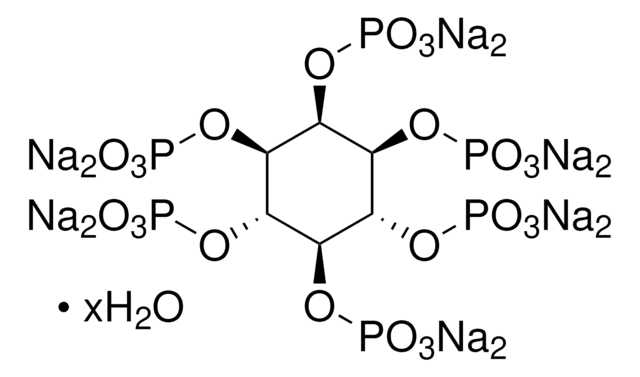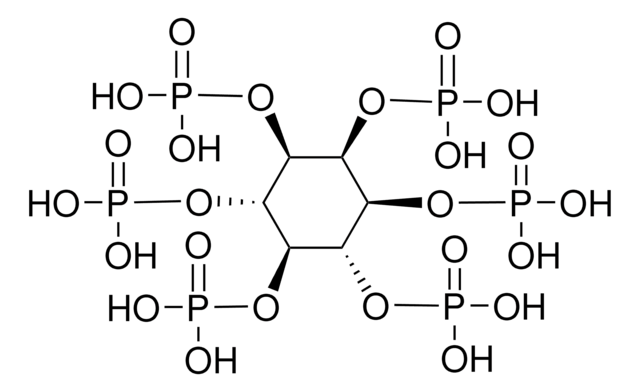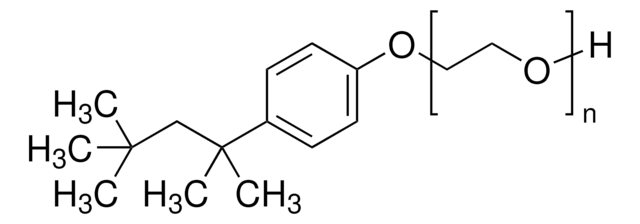P0109
Phytic acid sodium salt hydrate
from rice, ≥90% phosphorus (P) basis
Synonym(s):
myo-Inositol hexakis(dihydrogen phosphate), Inositol hexakisphosphate, Inositol hexaphosphoric acid, InsP6
About This Item
Recommended Products
biological source
rice
Assay
≥90% phosphorus (P) basis
composition
Sodium, ≥10 mol/mol ICP
impurities
≤0.1% Inorganic phosphorus
SMILES string
[Na+].[Na+].[Na+].[Na+].[Na+].[Na+].[Na+].[Na+].[Na+].[Na+].[Na+].[Na+].[O-]P([O-])(=O)O[C@H]1[C@H](OP([O-])([O-])=O)[C@H](OP([O-])([O-])=O)[C@H](OP([O-])([O-])=O)[C@@H](OP([O-])([O-])=O)[C@@H]1OP([O-])([O-])=O
InChI
1S/C6H18O24P6.12Na/c7-31(8,9)25-1-2(26-32(10,11)12)4(28-34(16,17)18)6(30-36(22,23)24)5(29-35(19,20)21)3(1)27-33(13,14)15;;;;;;;;;;;;/h1-6H,(H2,7,8,9)(H2,10,11,12)(H2,13,14,15)(H2,16,17,18)(H2,19,20,21)(H2,22,23,24);;;;;;;;;;;;/q;12*+1/p-12
InChI key
KETSPIPODMGOEJ-UHFFFAOYSA-B
Looking for similar products? Visit Product Comparison Guide
General description
Application
Biochem/physiol Actions
Signal Word
Warning
Hazard Statements
Precautionary Statements
Hazard Classifications
Acute Tox. 4 Oral
Storage Class Code
11 - Combustible Solids
WGK
WGK 1
Flash Point(F)
Not applicable
Flash Point(C)
Not applicable
Personal Protective Equipment
Regulatory Information
Choose from one of the most recent versions:
Already Own This Product?
Find documentation for the products that you have recently purchased in the Document Library.
Our team of scientists has experience in all areas of research including Life Science, Material Science, Chemical Synthesis, Chromatography, Analytical and many others.
Contact Technical Service